How to Use Technology for Customer Retention?
From recovering abandoned carts to processing transactions, it has become easier for brands to drive customer retention with technology. In this...
Learn the reasons why customers abandon carts and the best practices to recover carts with this complete guide to cart abandonment
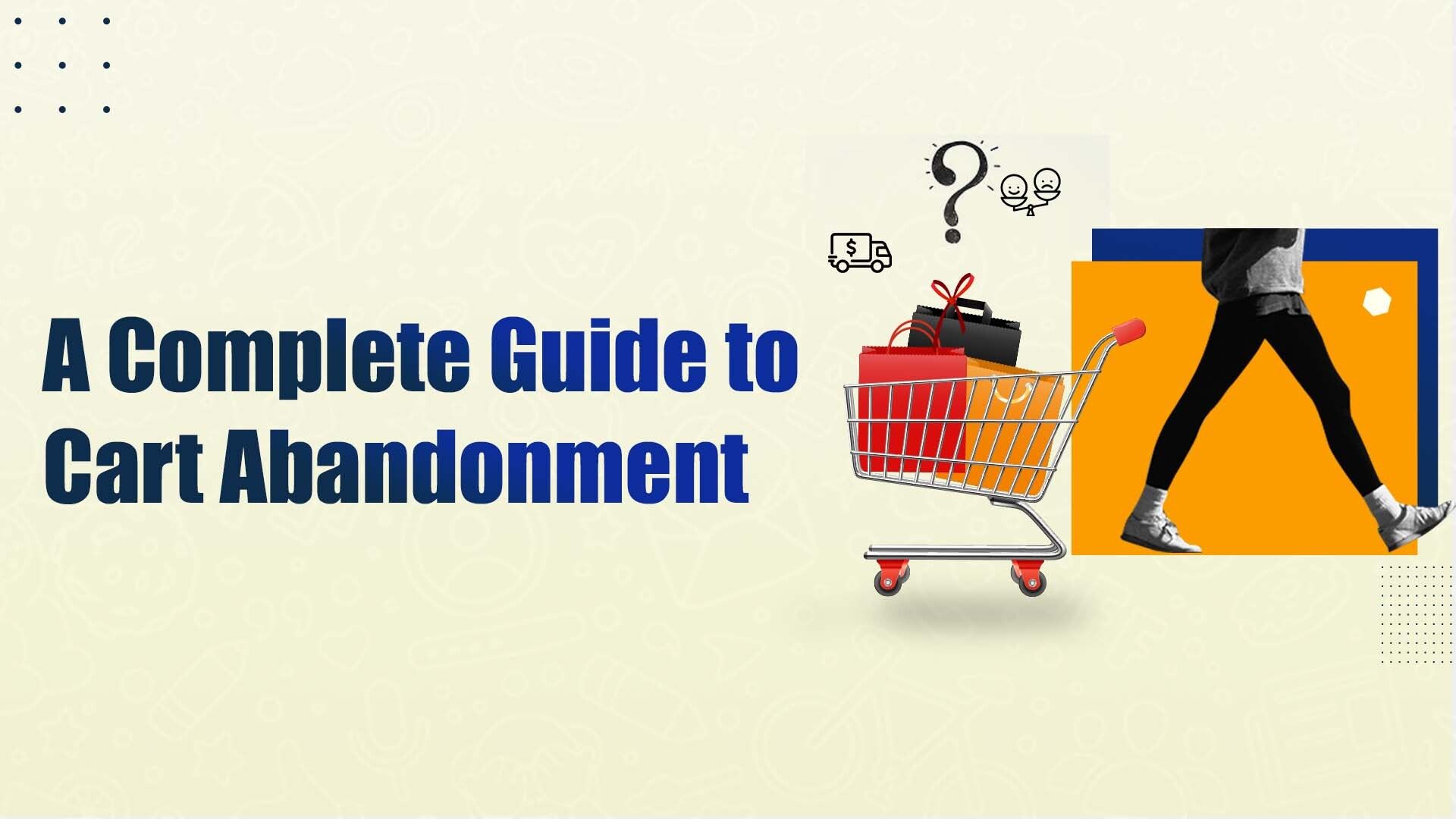
The average abandoned cart rate was a whopping 69.57% across all sectors in 2021.
That’s a lot of potential customers that didn’t convert for some reason or the other.
No matter how amazing and connected your shopping journey is, there will always be some shoppers who will abandon their carts.
However, retailers should keep in mind that the customer displayed interest in the products while browsing even if it resulted in cart abandonment.
An abandoned cart occurs when a customer browses products, adds them to the cart but doesn’t complete the checkout process. For instance, a customer may have intended to purchase a black sweater but dropped off due to lack of convenient delivery options or high shipping costs. Thus resulting in an abandoned cart.
Download the FREE E-Book on how to recover carts with WhatsApp
There can be numerous reasons why customers may add items to their cart without completing their transactions. According to a cart abandonment survey, some of the common reasons for abandonment include:
Some customers may feel that the shipping cost is too high or they don't want to pay for shipping. In the survey, it was found that 23% of respondents had an issue with shipping.
Some customers like to conduct research and compare prices before purchasing a product. 18% of respondents wanted to compare prices and 39% wanted to do some more research.
Some customers like to touch and feel products before purchasing. In this case, they browse products, add them to their carts but abandon them just to purchase them from the offline store. 15% of respondents decided to buy in-store instead of purchasing it online.
Read also Online shopping vs offline shopping - what's better?
Some customers prefer having the payment options they are used to. The question is whether your brand offers popular payment options that your customers trust. 6% of respondents abandoned carts due to lack of payment options
Mobile experience plays a major role in converting a potential customer. More than 50% of shoppers conduct online shopping via mobile devices. Is your ecommerce site optimized for mobile devices? The survey found that 4% of respondents abandon carts due to technical difficulties.
Window shopping is a very common reason why people abandon carts. Some shoppers say they are just browsing but are unsure whether they want to buy. The survey found that 34% of respondents were “just-looking” i.e not ready to buy.
Some customers do not complete their purchase since they feel that the checkout process is too complicated. Maybe they have to put in a lot of unwanted details in the check-out form or the page is confusing. 13% of respondents felt the checkout was too complicated.
Some customers are afraid to complete their purchases online due to security concerns. Can your shoppers trust your ecommerce site with their credit cards and personal information?
Explore our Podcasts
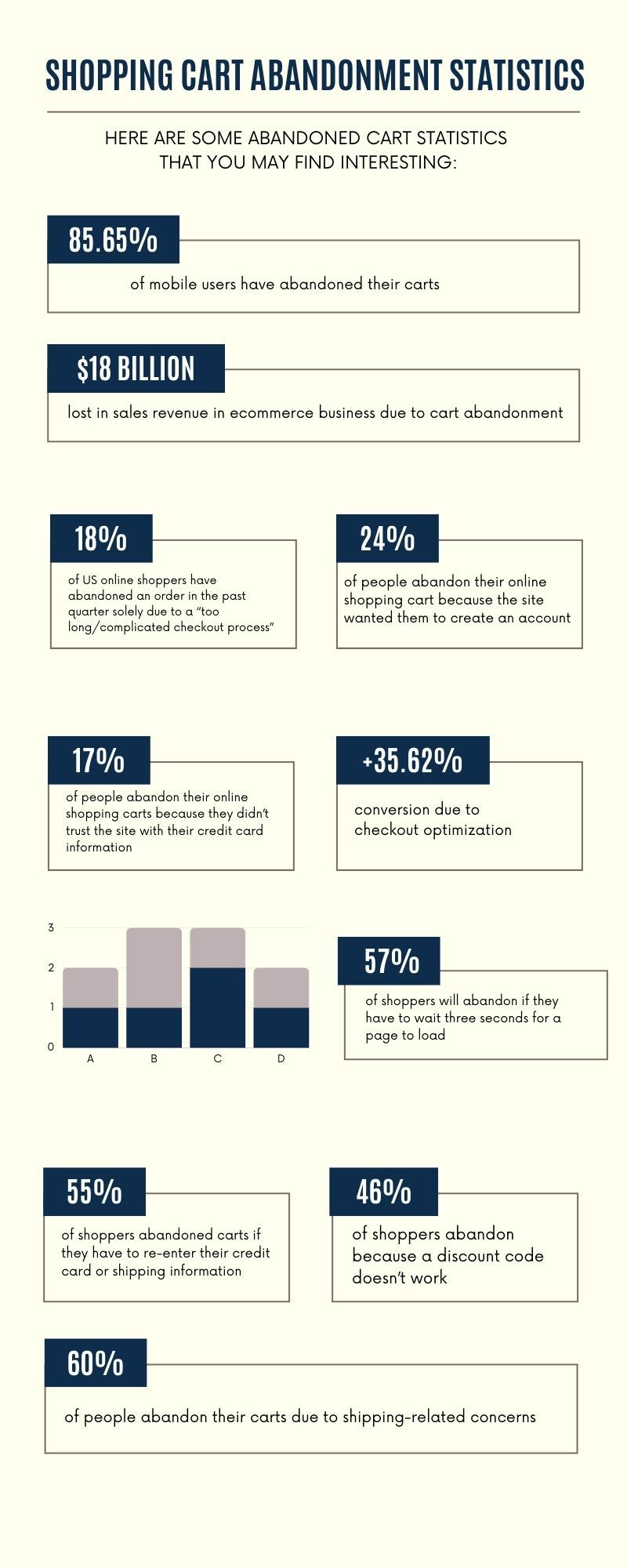
Devising a strategic plan is an essential part of the abandoned cart recovery campaign. A campaign that is solely based on email can only have a limited impact.
But if you use other channels such as social media and use cross-channel marketing, you can generate a significant amount of revenue.
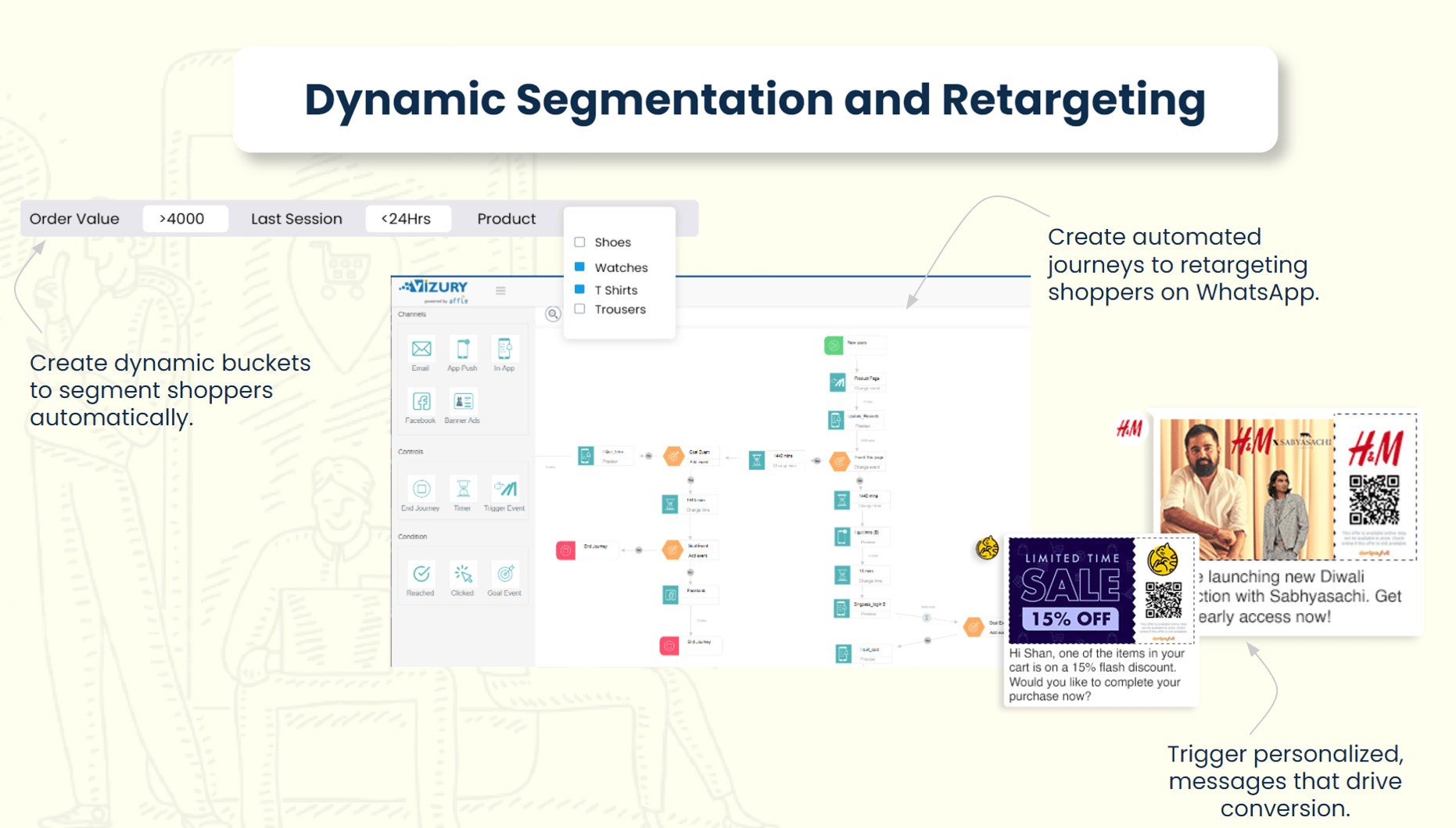
This is a crucial step since you can’t get anywhere without segmenting your audience. There are thousands of shoppers coming to your site but not all have the same purchase intent. Some of the ways you can segment your audience are:
✅New customers
✅Repeat customers
✅Type/category of products browsed
✅Value of items left in the cart
✅The time spent on the site
Every segment will require a different approach. A repeat customer expects you to know their purchase history or what they prefer. This may not be the same for a new customer. Once your audience is segmented, you can design your campaign accordingly.
For instance, for shoppers that are ready to make a purchase, a limited period offer or a discount coupon can incentivize them to complete the purchase.
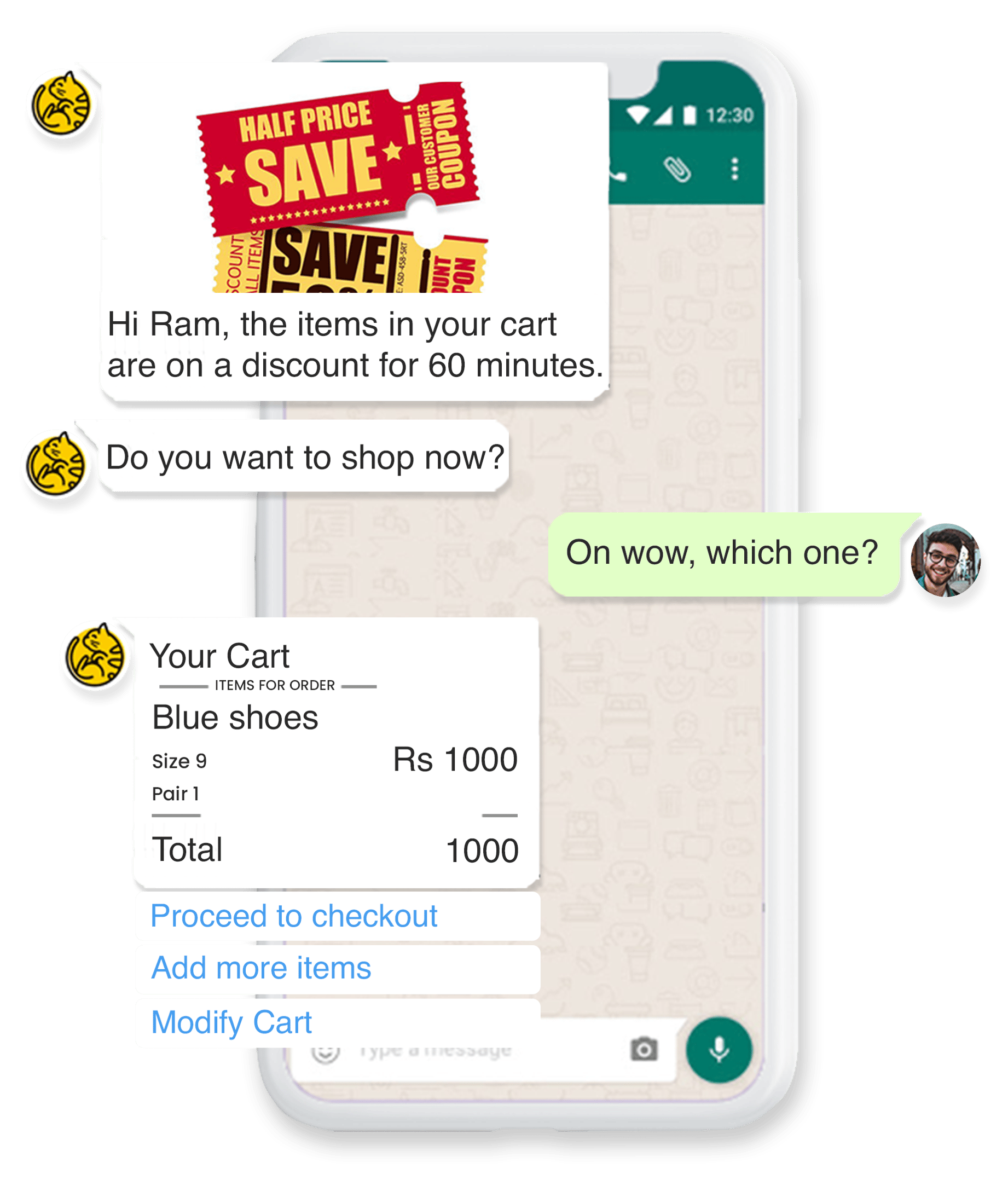
New visitors may need more information and social proof about your products so sending them customer testimonials and benefits of your products can help you convert them.
Read also How to convert digital engagement into leads and sales?
Once you are done segmenting your audience and strategizing your approach, it's time to put your campaign into motion.
Emails are one of the most effective marketing tools for ecommerce brands. Statistics show that 45% of cart abandonment emails are opened, 21% of all is clicked on, while 50% of the users clicked purchase.
In order to create an amazing campaign, here are some tips you should follow:
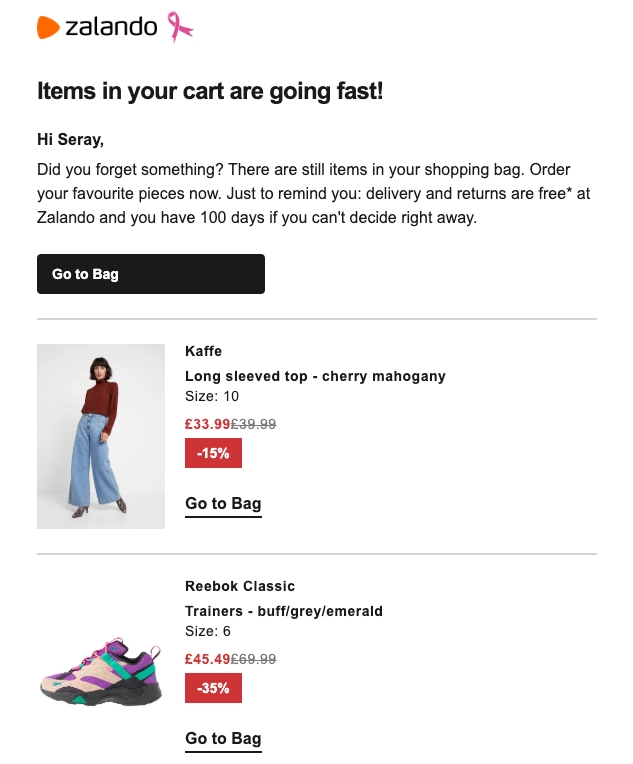
3. A clear CTA to guide the customer to take an action
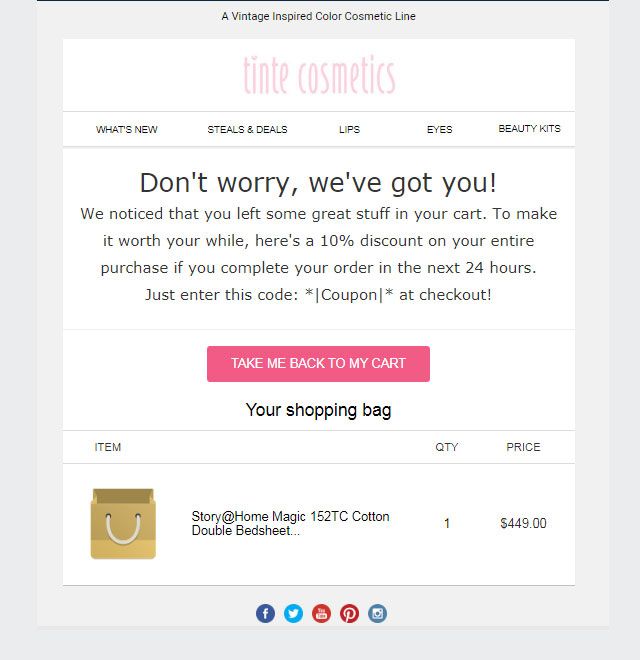
4. Add images of the cart items reminding shoppers of what they’ve added
5. Add reviews or customer testimonials of the cart items
6. Make sure the email is mobile friendly so the customers don't have to zoom in to read the email
7. Highlight coupons or discount offers to entice customers
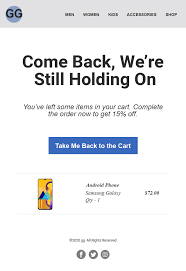
Here’s an example of how you can build your email marketing flow
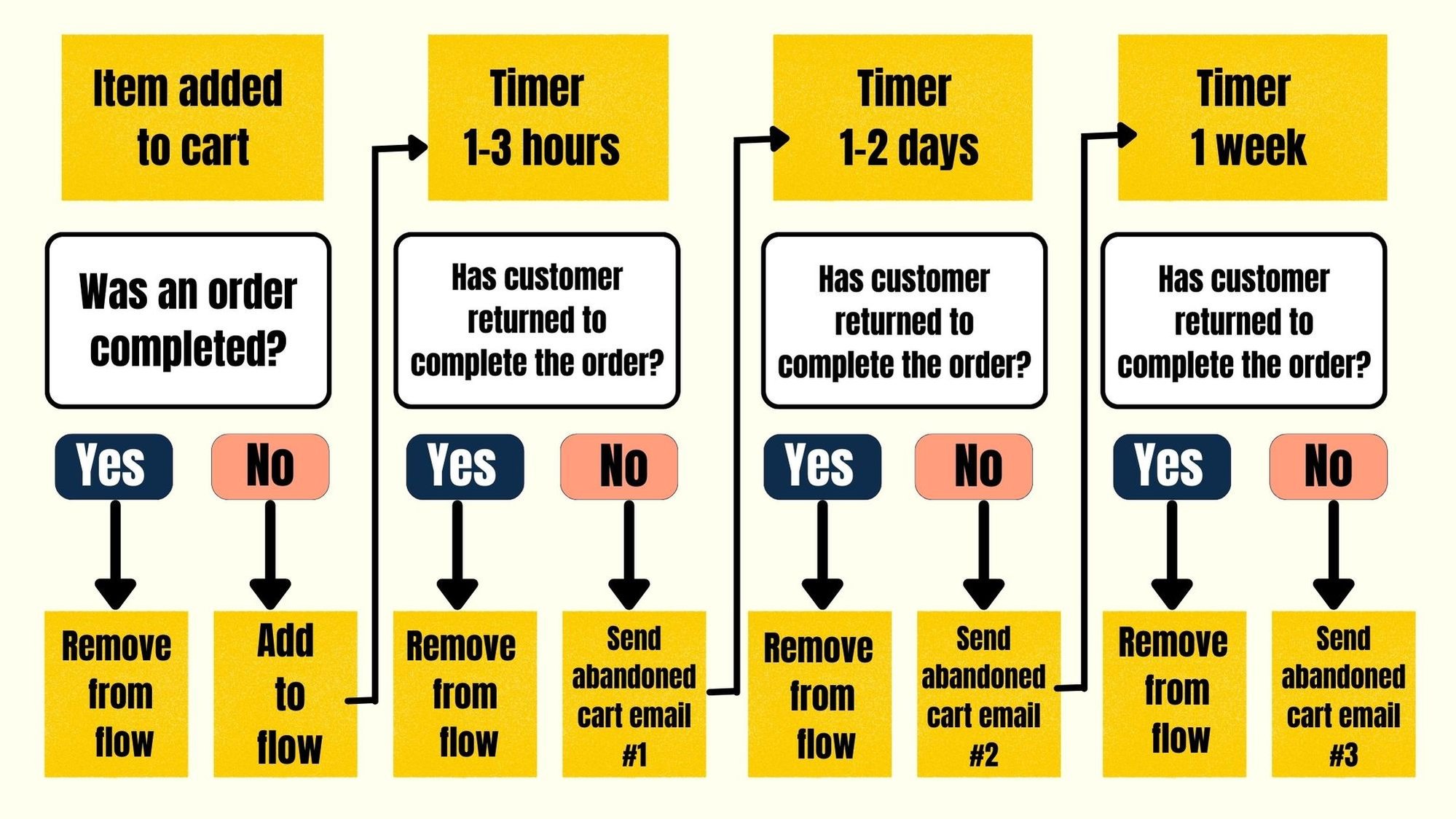
These ads are used to target website visitors or people who are listed in your database. Facebook ads or Instagram ads are excellent tools to recatarget your visitors. Here are some tips you should consider while designing your ad:
Download the FREE E-Book on how to recover carts with WhatsApp
You can also recover your abandoned carts via WhatsApp:
When a buyer drops off at the checkout page or while creating an account, you can offer an additional discount coupon on WhatsApp to incentivize the customer to complete their purchase.
Send pre-approved WhatsApp template messages that are triggered when a customer abandons their digital cart on your eCommerce site. Setting this up is quick and easy. Here’s an example:
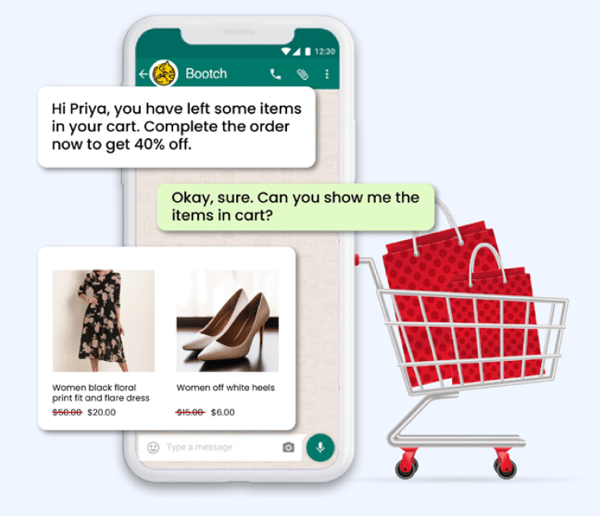
Let's face it - a good deal is always hard to resist. Send personalized WhatsApp promotional messages to incentivize customers to complete their purchases.
A casual reminder highlighting that the item left in the cart is on a discount for 60 mins is a great way to create a sense of urgency and incentivize them to complete the purchase.
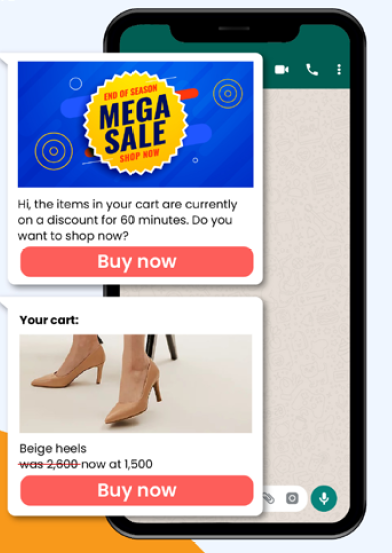
Recommend products using WhatsApp based on the shoppers browsing history. Embrace the power of personalization by using data to your advantage.
Jimmy Choo uses browsing data to show items viewed on their last visit along with related product recommendations.
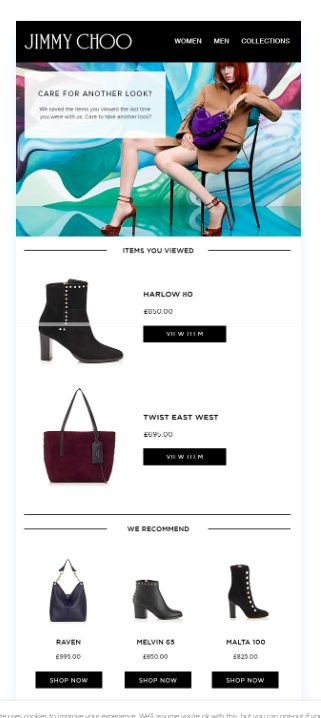
Here’s an example of how you can do it on WhatsApp:
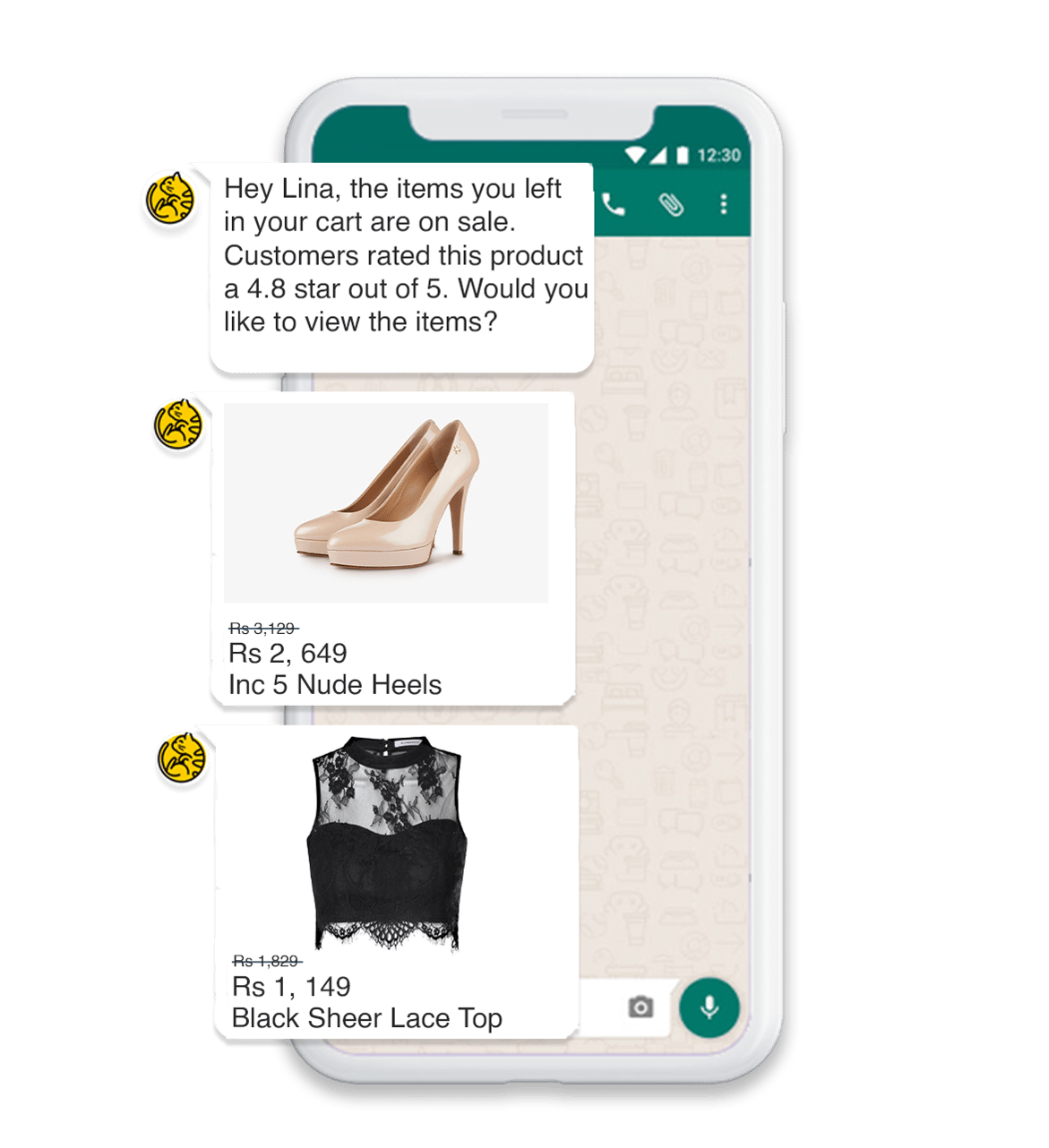
WhatsApp is an excellent channel to send back in-stock and restock alerts. You can create product links with payment options to make it easier for your customers to complete their purchases directly on the app. Here’s an example:
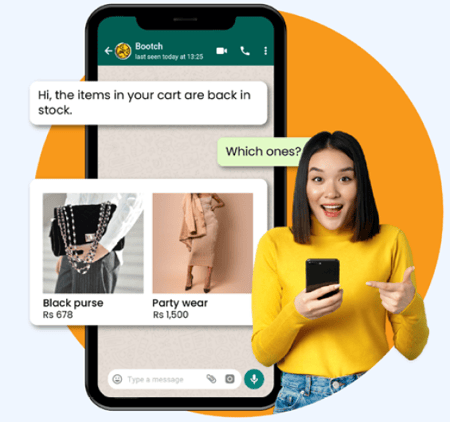
Feedback can help your brand understand the root of the problem. Once you’ve found the reason the customer abandoned their cart, you can take necessary measures to solve their problem in real-time.
You can offer a discount coupon as an apology for the inconvenience your customer may have faced. This is an excellent way to improve customer satisfaction. Here’s an example:
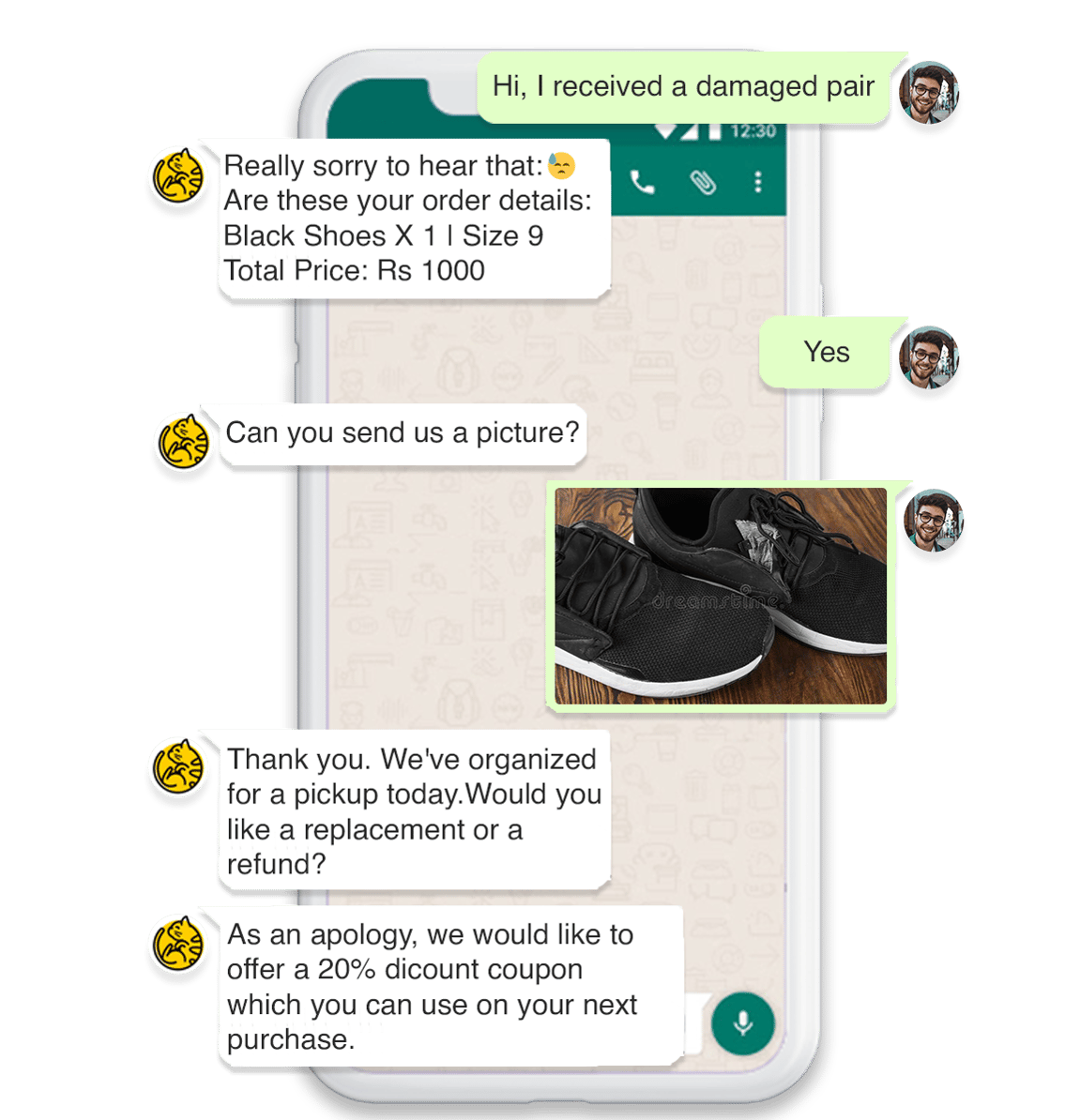
One of the oldest tricks is creating a sense FOMO when visitors are on your ecommerce site. Offering a limited period offer such as a coupon code valid for the next two hours can be an effective way to reduce the abandonment rate. Here’s an example:
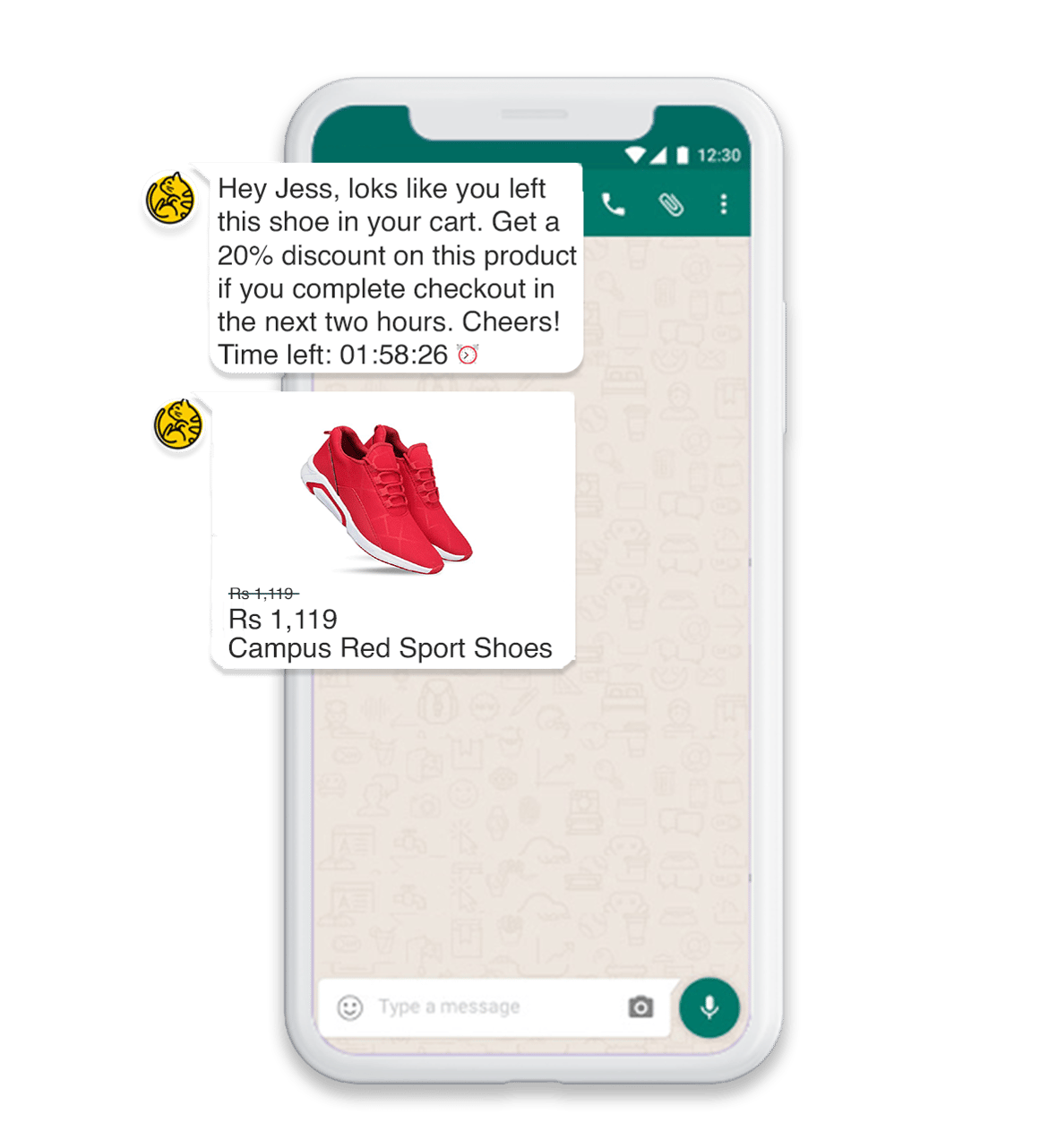
H&M does a great job in creating a sense of urgency among customers. They have also displayed a timer on the checkout page to incentivize them to complete their purchase as soon as possible.
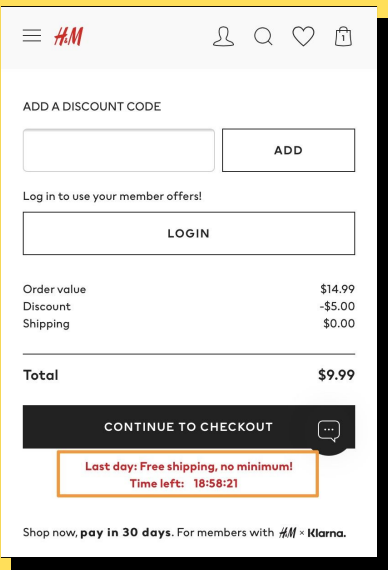
This is the last and the most important step of your cart recovery campaign. Most recovery campaigns send shoppers back to the shopping cart page. Often times this results in customers leaving your page again. A personalized landing page will incentivize the shopper to complete their purchase.
For instance, if you offer a discount coupon on your ad, it is essential to make sure your customer receives the offer. In case your shoppers browsed multiple products, it may be useful to design a landing page that gives product recommendations.
An effective cart recovery campaign combines both email marketing and social media ads to provide a personalized and consistent shopping experience.
The right tactics can drastically reduce the abandoned cart rate on your site. Here are a few effective ways to reduce cart abandonment:
Once your shoppers have added the products to their cart, it is essential to display their progress. Make the next steps clear so they can follow along. For instance, Myntra adds clear directions of a shopper’s progress. It clearly confirms that the product has been added to the cart and offers the next steps to complete their checkout.
It also has a clear call to action on the shopping cart page with the updated order details.
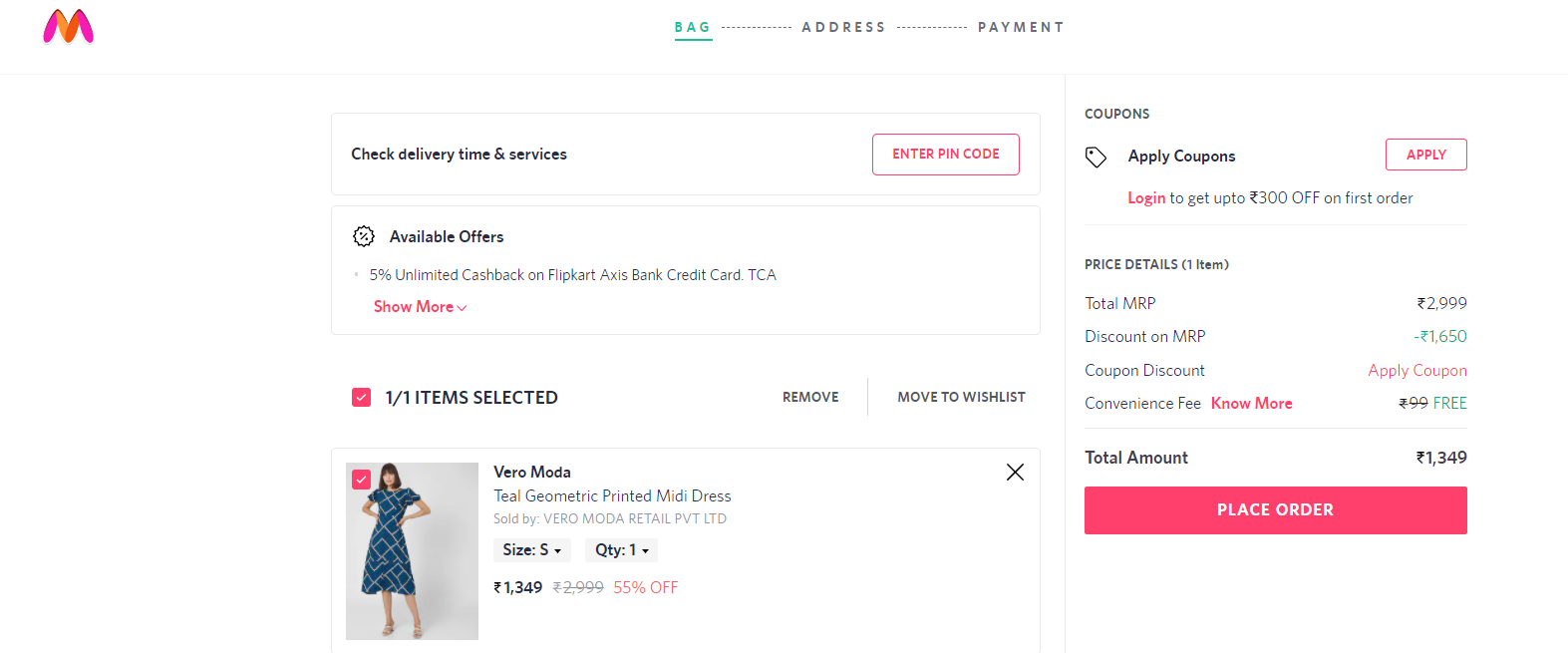
One of the biggest reasons for an abandoned cart is the lack of convenient delivery options. Every shopper’s need is different. Some prefer low or no delivery cost while others prefer speedy delivery and convenience.
Hence, it is essential to offer a range of delivery options that are catered to your shoppers. For instance, Puma informs its customers which item ships for free before a customer proceeds to checkout. This helps in reducing the abandoned cart rate.
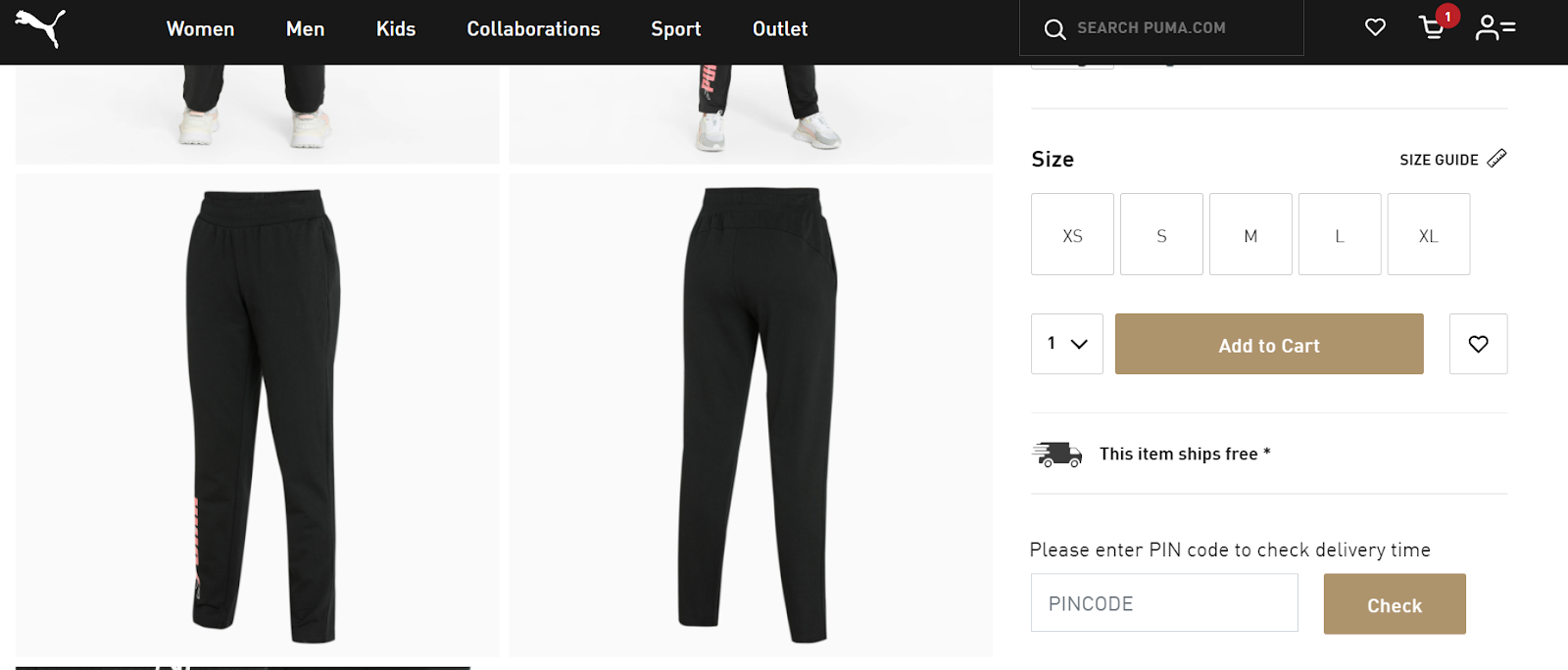
Vizury enabled Puma (Singapore & Malaysia) to offer convenient delivery options such as try and buy, Buy online pick up in-store along with product recommendations while checking out.
Check out how Vizury can scale your brand here
This not only solves the abandoned cart issues related to delivery options but also helps in increasing average order value with personalization
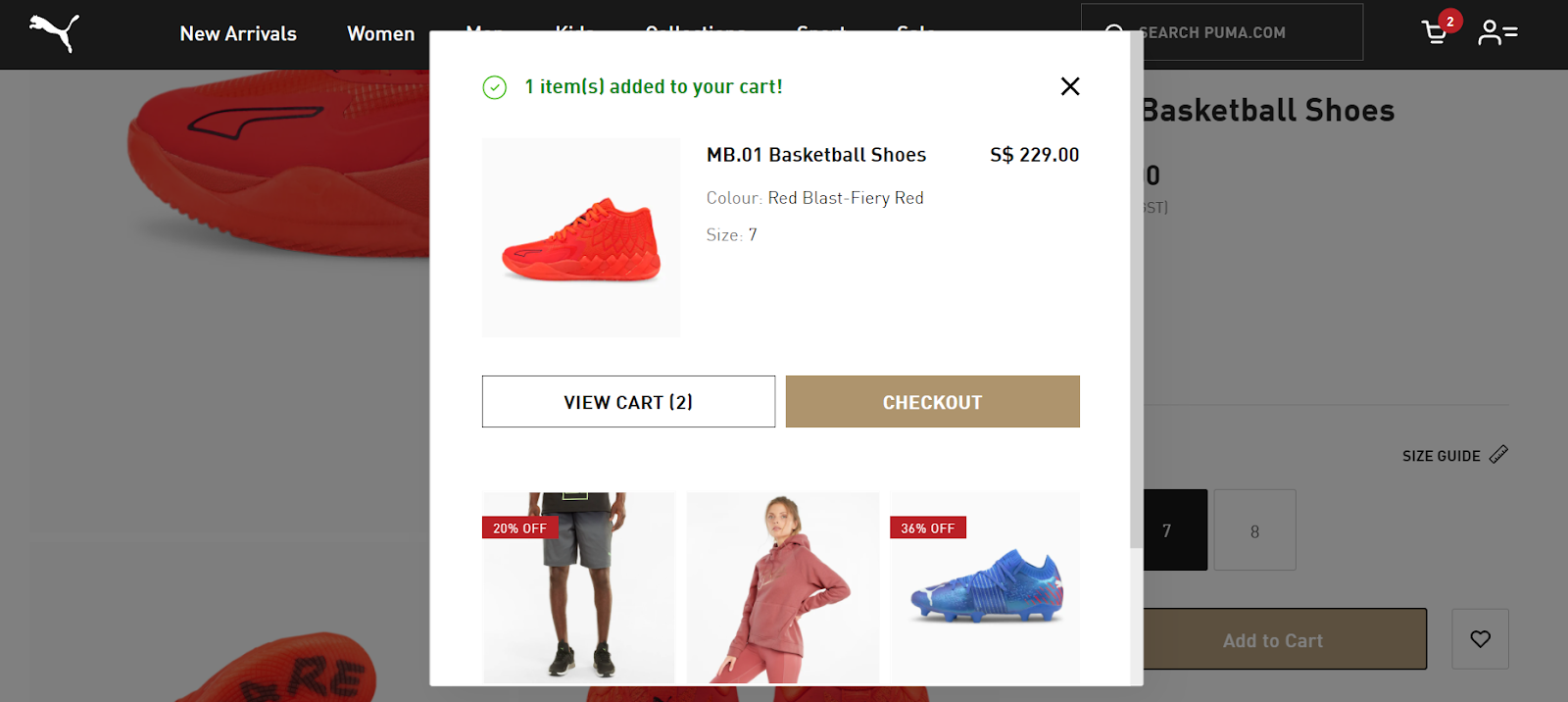
Most customers drop off when they see “hidden” costs at checkout. It is essential to ensure that your site is transparent about all costs related to the purchase. A recent survey found that 21% dropped off because they saw hidden costs at the checkout.
It may be easier to display all charges on product pages as and when customers are deciding to buy.
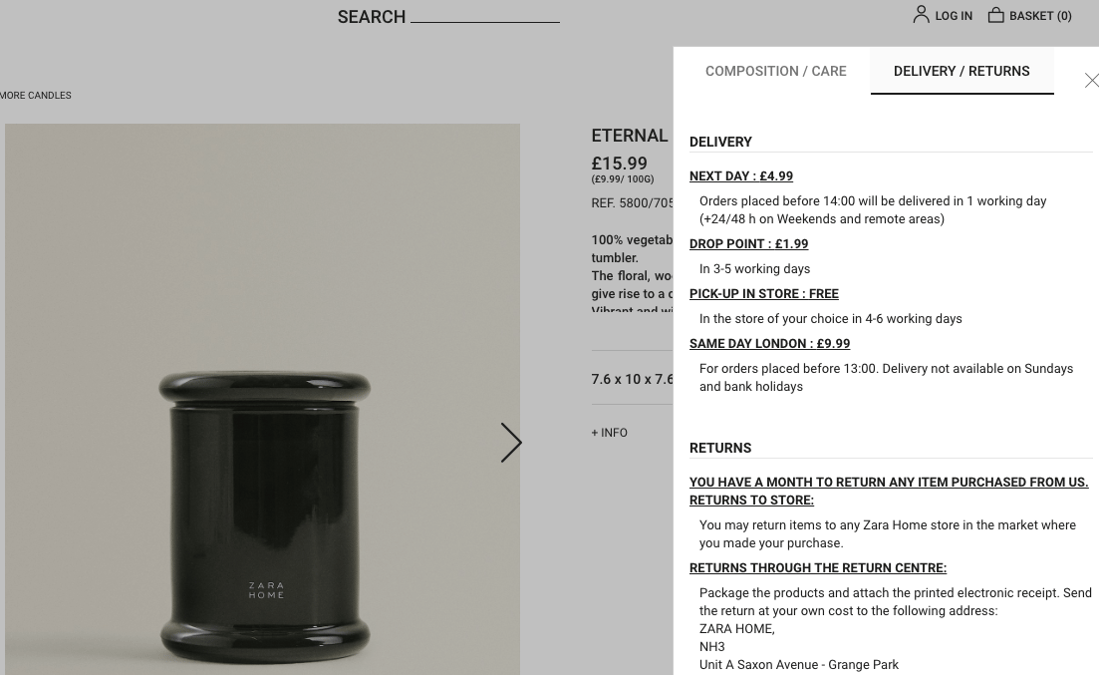
You can also include a shipping calculator that allows shoppers to check the shipping cost based on their location
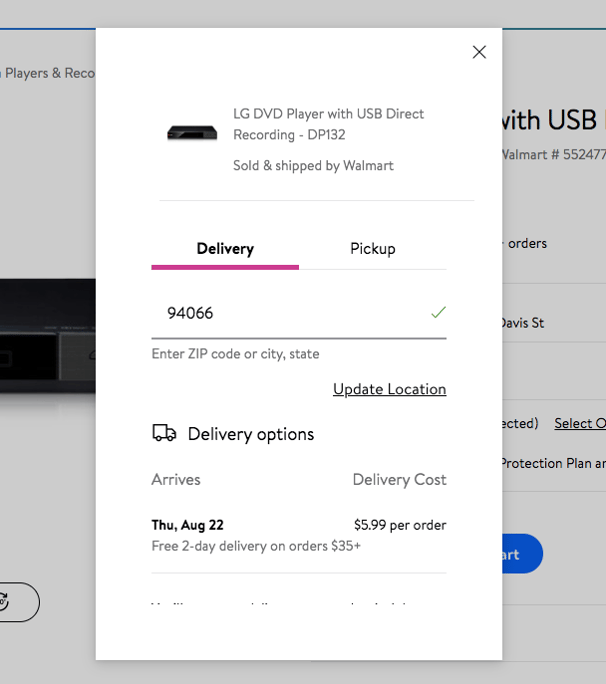
Assessing your analytics can help retailers track and understand abandoned cart rates. This can also help identify patterns or changes in customer behavior. The data can be utilized to analyze where the customers drop off and at which point you should retarget them to bring them back to your store.
Checkout forms should be easy and user-friendly. When a customer goes to the cart with the intent to purchase and finds that the checkout process is long, they will immediately drop off.
A well-designed checkout form makes the purchase process look and feel easier. For instance, HM’s check-out process is seamless. It displays all the order details and the total cost
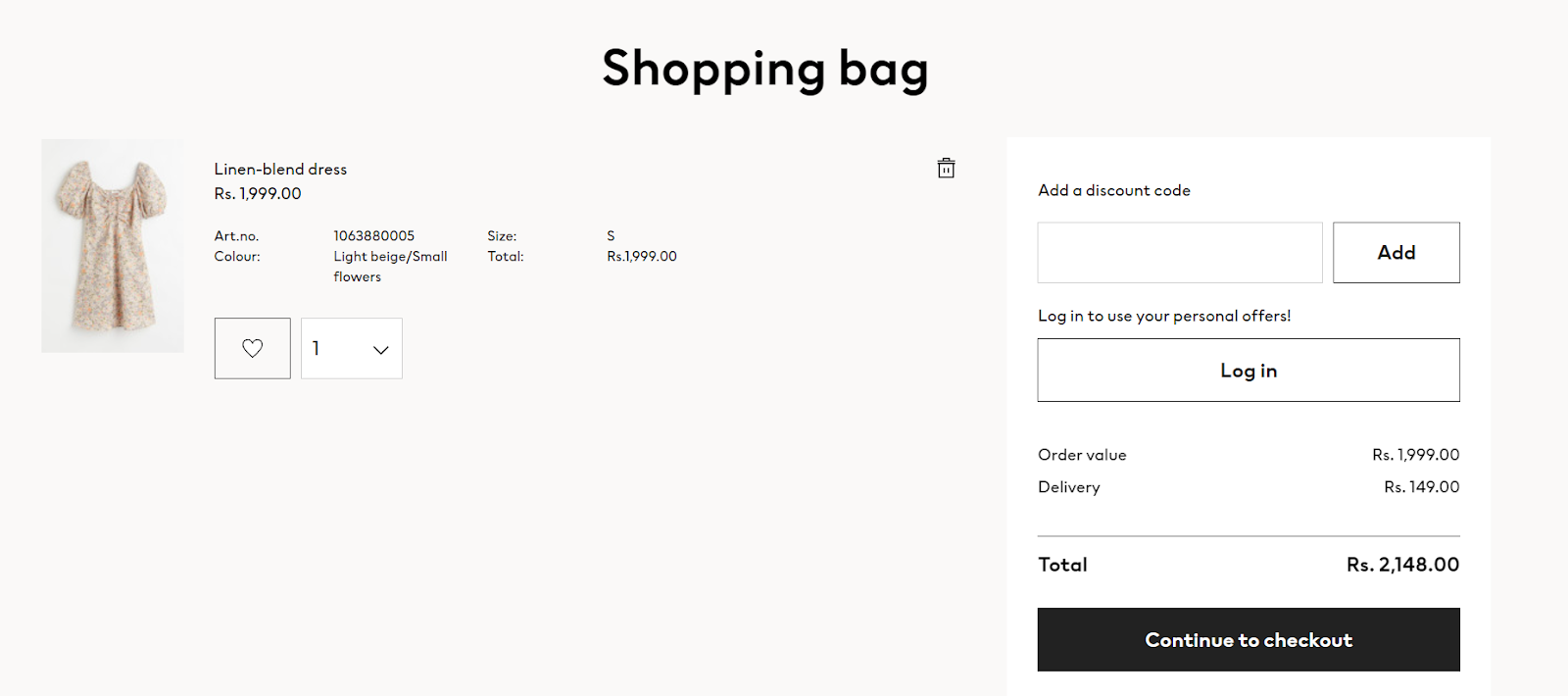
It also offers checkout options based on customer preferences
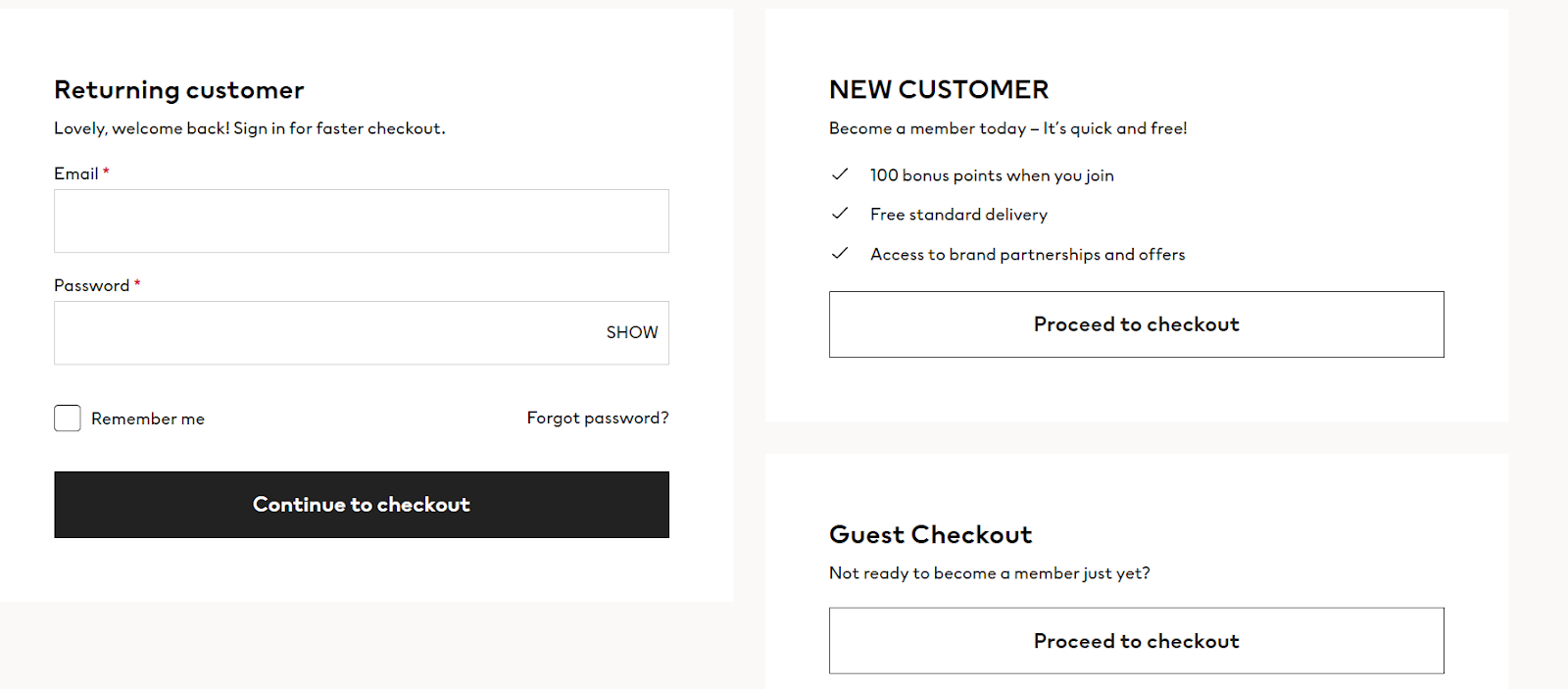
And allows customers to complete a hassle-free purchase
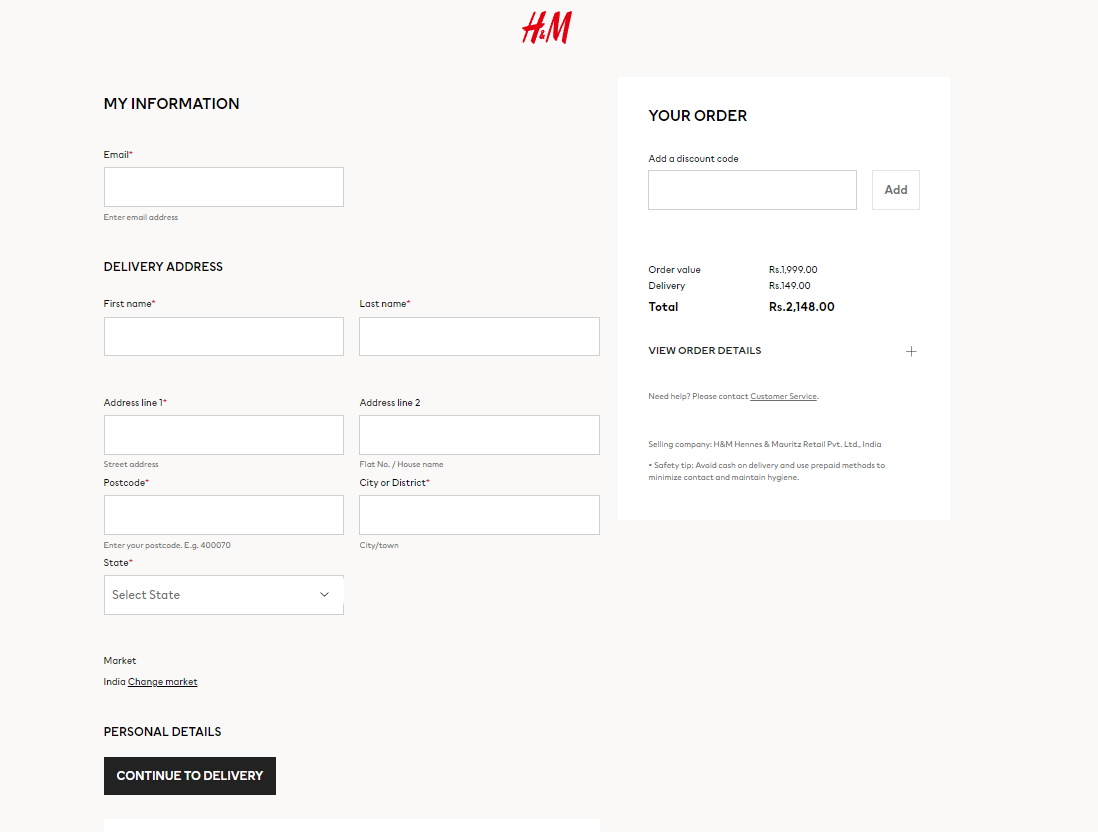
Customers like the option of having a wide range of options when it comes to payments. Some customers like to pay with credit cards while others prefer PayPal. A customer may drop off if they don’t find their preferred mode of payment. Hence, it is essential to offer all the popular options.
Some payment methods even speed up the checkout process which is why some customers prefer it. For instance, some customers prefer Google Pay or PayPal because it can process payments faster and is more convenient.
Despite your best efforts, it will never be possible to achieve a 100% conversion rate. Some shoppers will still abandon their carts due to various reasons. However, using the right tools and designing a strategy can help level up your conversion rate and recover abandoned carts. Are you ready to boost your conversion rate?
Drop us a hello at hello@vizury.com to get started.
From recovering abandoned carts to processing transactions, it has become easier for brands to drive customer retention with technology. In this...
Explore the complete guide to WhatsApp opt-in, including best practices, tips for successful implementation, and ensure compliance with privacy...
WhatsApp has recently updated its pricing model which will be effective from June 01, 2023. Conversations will now be charged based on four prime...
Be the first to know about new B2B SaaS Marketing insights to build or refine your marketing function with the tools and knowledge of today’s industry.